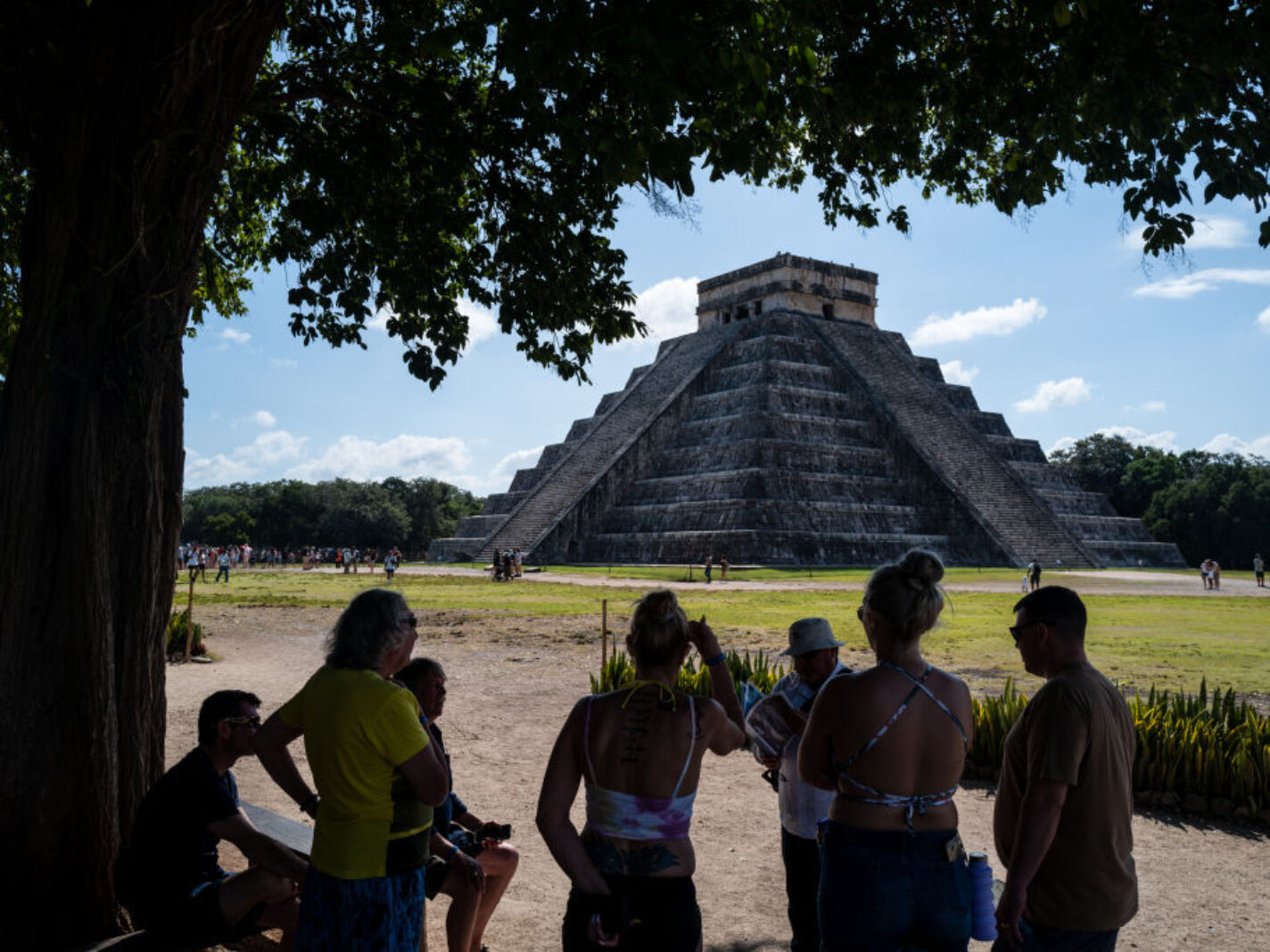Unfortunately, we’re back with another disrespectful stunt at Chichen Itza in Mexico. For at least the second time in the last nine weeks, a tourist scaled the steps of the protected Mayan pyramid known as Templo de Kukulcán – an action many consider insulting to the history of the pre-Hispanic archaeological site.
This time, a tourist from Poland went viral for his stunt on Saturday (January 28). In a video circulating on social media, the man is seen being escorted down the pyramid’s steps by two staff members. Once he reaches the ground, other visitors begin surrounding him to voice their discontent.
A shirtless man wearing colorful shorts and a pair of slides and holding a large stick can be seen surveying the area as the Polish tourist starts to leave the premises. The man then walks closer to the tourist and hits him in the head with the stick. An audible snap can be heard, and the tourist grabs his head, presumably in pain.
According to TMZ, the tourist was arrested and held in custody for 12 hours before being released. In November, another tourist who climbed the pyramid and danced at the top was attacked for her offensive act. She had her hair pulled, and water was thrown at her before being chased off.
Located in the Tinúm Municipality in Mexico, Chichén Itzá was named one of the New 7 Wonders of the World by the United Nations Educational, Scientific and Cultural Organization (UNESCO) in 2007. The archaeological site welcomes over 2.5 million visitors annually. Luckily, the vast majority of them stay on the ground.
